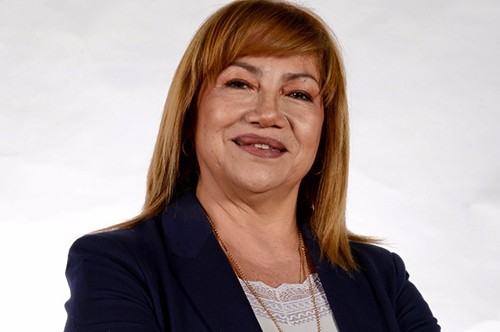Expert Opinion Article by Lita Calenzani, President, Women in Mining Peru (WiM Peru)


Mining is a strategic industry for Peru, contributing around 10% of GDP and employing nearly 200,000 people in 2017. Yet, the participation of women in the sector is limited and only reaches 5.4% of the total mining industry workforce according to the Ministry of Energy and Mines. Looking more closely at these figures, 49% of women are dedicated to administrative positions; 30% are in general operations; 17% work as plant personnel and only 4% hold management positions.
It is therefore urgent to increment not only the overall female participation, but also the share of women working at the plants and at the management layers of the industry. The World Economic Forum, in its Global Gender Gap Report for 2017 that gathered data from 144 countries, reflects this worrying situation, stating that the gap between male and female workers will only disappear in 217 years time (so, in 2234). Peru ranks 128th out of 144 countries, so we would be talking of centuries before we see the elimination of the salary gap.
During the last Perumin – 33rd Mining Convention, David Brereton of the University of Queensland presented a study that unveiled the low participation of women in Peru’s mining industry, as well as a negative trend to keep things that way or even reduce female participation.
Beyond the search for social justice, a number of international studies are proving that gender diversity directly contributes to the companies’ profitability. The aforementioned World Economic Forum’s report suggests that gender economic parity could add US$250 billion to the GDP of the U.K., US$1.75 trillion to the GDP of the U.S.A., and US$2.5 trillion to the GDP of China. Thus, investing in equality is profitable, and the world’s GDP could take advantage of that, experiencing 26% growth by 2025.
The promotion of a wider participation of women in the industry is a duty of the State, the companies and the civil society. The State needs to implement public policies that promote parity and equal opportunities. Companies need to review their corporate policies regarding recruitment and career path development. Finally, the civil society must create awareness about the importance and contribution of women in the industry.
With all this in mind, Women in Mining Peru (WiM Peru) was created in September 2016 as a civil society organization, following the invitation of International Women in Mining (IWiM) headquartered in London. This organization counts more than 10,000 women in the mining sector worldwide as members. The objective of WiM PERU is to highlight the role of women in Peruvian mining, promote best corporate practices, contribute to women’s comprehensive training, facilitate the exchange of experiences and inspire other women to join the sector.
WiM Peru’s official launch took place in March 2017 and since then, its Board of Directors, consisting of experienced women working in the mining sector and related industries, has carried out an extensive effort to promote and position the organization. Today, we have more than 300 active members nationally.
One of WiM Peru’s initiatives has been the creation of decentralized branches. Our South Branch covers Arequipa, Moquegua and Tacna. Moreover, we have Student Chapters in Central Peru and in Puno. Another key initiative is our Mentoring program, where members support each other in their personal and professional growth. There is also a monthly event for members called Women & Mines, where we tackle both hard and soft skills and which concludes with a networking space for participants. Women are not used to networking and the development of contact networks is essential during a professional career. Finally, the organization has been active on Facebook, LinkedIn, Instagram and Twitter, and it has also produced a monthly bulletin to reach more women with our message and provide up-to-date information on activities and achievements by women in the industry.
To conclude, WiM Peru firmly believes in gender equality. This means equal opportunities and fair decisions based on the skills of the different professionals. There is a lot of female talent out there, and this talent can perfectly match the needs and expectations of the mining industry.

Mining is a strategic industry for Peru, contributing around 10% of GDP and employing nearly 200,000 people in 2017. Yet, the participation of women in the sector is limited and only reaches 5.4% of the total mining industry workforce according to the Ministry of Energy and Mines. Looking more closely at these figures, 49% of women are dedicated to administrative positions; 30% are in general operations; 17% work as plant personnel and only 4% hold management positions.
It is therefore urgent to increment not only the overall female participation, but also the share of women working at the plants and at the management layers of the industry. The World Economic Forum, in its Global Gender Gap Report for 2017 that gathered data from 144 countries, reflects this worrying situation, stating that the gap between male and female workers will only disappear in 217 years time (so, in 2234). Peru ranks 128th out of 144 countries, so we would be talking of centuries before we see the elimination of the salary gap.
During the last Perumin – 33rd Mining Convention, David Brereton of the University of Queensland presented a study that unveiled the low participation of women in Peru’s mining industry, as well as a negative trend to keep things that way or even reduce female participation.
Beyond the search for social justice, a number of international studies are proving that gender diversity directly contributes to the companies’ profitability. The aforementioned World Economic Forum’s report suggests that gender economic parity could add US$250 billion to the GDP of the U.K., US$1.75 trillion to the GDP of the U.S.A., and US$2.5 trillion to the GDP of China. Thus, investing in equality is profitable, and the world’s GDP could take advantage of that, experiencing 26% growth by 2025.
The promotion of a wider participation of women in the industry is a duty of the State, the companies and the civil society. The State needs to implement public policies that promote parity and equal opportunities. Companies need to review their corporate policies regarding recruitment and career path development. Finally, the civil society must create awareness about the importance and contribution of women in the industry.
With all this in mind, Women in Mining Peru (WiM Peru) was created in September 2016 as a civil society organization, following the invitation of International Women in Mining (IWiM) headquartered in London. This organization counts more than 10,000 women in the mining sector worldwide as members. The objective of WiM PERU is to highlight the role of women in Peruvian mining, promote best corporate practices, contribute to women’s comprehensive training, facilitate the exchange of experiences and inspire other women to join the sector.
WiM Peru’s official launch took place in March 2017 and since then, its Board of Directors, consisting of experienced women working in the mining sector and related industries, has carried out an extensive effort to promote and position the organization. Today, we have more than 300 active members nationally.
One of WiM Peru’s initiatives has been the creation of decentralized branches. Our South Branch covers Arequipa, Moquegua and Tacna. Moreover, we have Student Chapters in Central Peru and in Puno. Another key initiative is our Mentoring program, where members support each other in their personal and professional growth. There is also a monthly event for members called Women & Mines, where we tackle both hard and soft skills and which concludes with a networking space for participants. Women are not used to networking and the development of contact networks is essential during a professional career. Finally, the organization has been active on Facebook, LinkedIn, Instagram and Twitter, and it has also produced a monthly bulletin to reach more women with our message and provide up-to-date information on activities and achievements by women in the industry.
To conclude, WiM Peru firmly believes in gender equality. This means equal opportunities and fair decisions based on the skills of the different professionals. There is a lot of female talent out there, and this talent can perfectly match the needs and expectations of the mining industry.